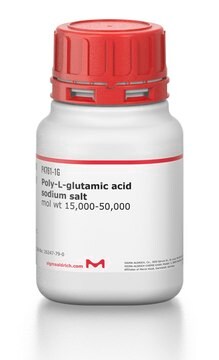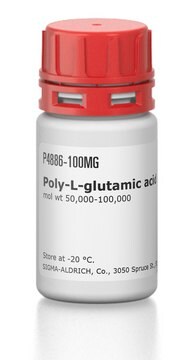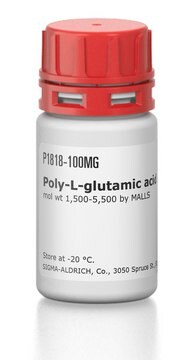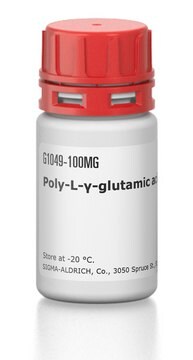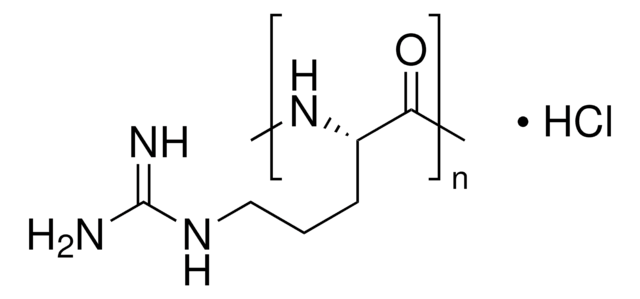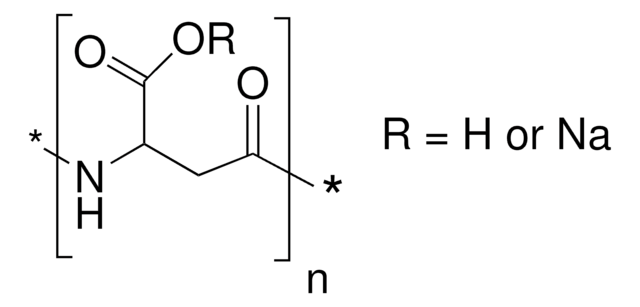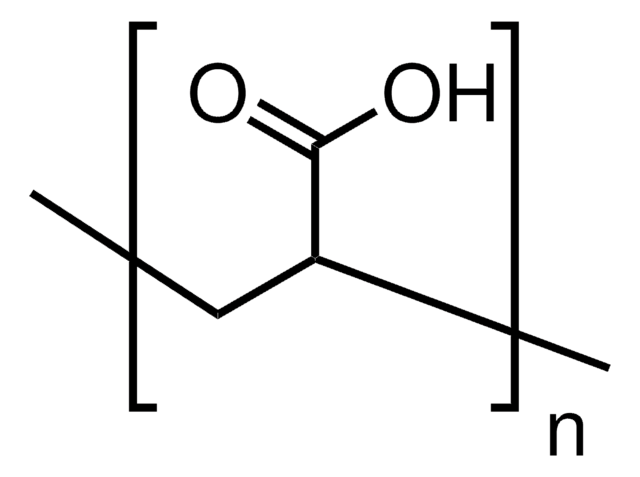Kluczowe dokumenty
P4636
Poly-L-glutamic acid sodium salt
suitable for ligand binding assays, Mol wt 3,000-15,000
Synonim(y):
L-Glutamic acid homopolymer sodium salt
About This Item
Polecane produkty
Nazwa produktu
Poly-L-glutamic acid sodium salt, mol wt 3,000-15,000
Formularz
powder
Poziom jakości
masa cząsteczkowa
3,000-15,000
metody
ligand binding assay: suitable
kolor
white to off-white
temp. przechowywania
−20°C
InChI
1S/C15H23N3O10/c16-7(1-4-10(19)20)13(25)17-8(2-5-11(21)22)14(26)18-9(15(27)28)3-6-12(23)24/h7-9H,1-6,16H2,(H,17,25)(H,18,26)(H,19,20)(H,21,22)(H,23,24)(H,27,28)/t7-,8-,9-/m0/s1
Klucz InChI
BUZMZDDKFCSKOT-CIUDSAMLSA-N
Szukasz podobnych produktów? Odwiedź Przewodnik dotyczący porównywania produktów
Zastosowanie
- Bulk Biopolyelectrolyte Complexes from Homopolypeptides: Solid "Salt Bridges".: Investigates the creation of solid structures from biopolyelectrolyte complexes using Poly-L-glutamic acid sodium salt, emphasizing its potential in creating innovative materials with unique properties (Digby ZA et al., 2023).
- Polymeric Core-Shell Nanoparticles Prepared by Spontaneous Emulsification Solvent Evaporation and Functionalized by the Layer-by-Layer Method.: This research utilizes Poly-L-glutamic acid sodium salt in the production of core-shell structured nanoparticles, indicating its utility in nanoparticle functionalization and stability (Szczęch M et al., 2020).
Komentarz do analizy
Inne uwagi
Kod klasy składowania
11 - Combustible Solids
Klasa zagrożenia wodnego (WGK)
WGK 3
Temperatura zapłonu (°F)
Not applicable
Temperatura zapłonu (°C)
Not applicable
Środki ochrony indywidualnej
Eyeshields, Gloves, type N95 (US)
Wybierz jedną z najnowszych wersji:
Masz już ten produkt?
Dokumenty związane z niedawno zakupionymi produktami zostały zamieszczone w Bibliotece dokumentów.
Produkty
Humankind has utilized protein materials throughout its existence, starting with the use of materials such as wool and silk for warmth and protection from the elements and continuing with the use of recombinant DNA techniques to synthesize proteins with unique and useful properties.
Nasz zespół naukowców ma doświadczenie we wszystkich obszarach badań, w tym w naukach przyrodniczych, materiałoznawstwie, syntezie chemicznej, chromatografii, analityce i wielu innych dziedzinach.
Skontaktuj się z zespołem ds. pomocy technicznej